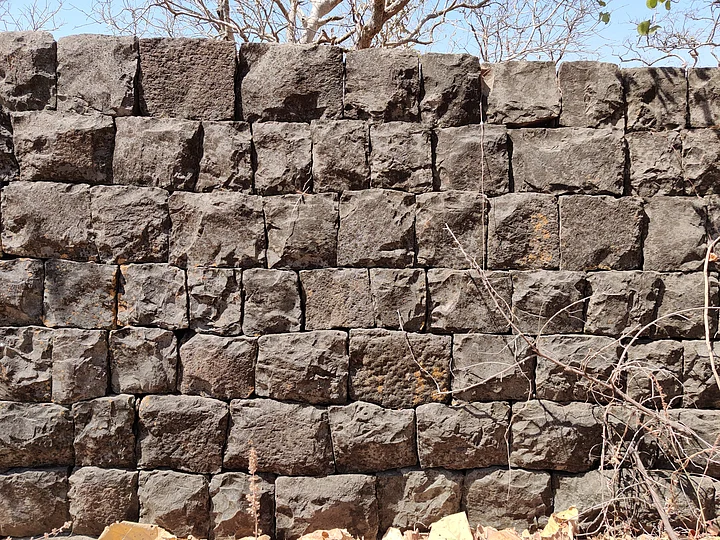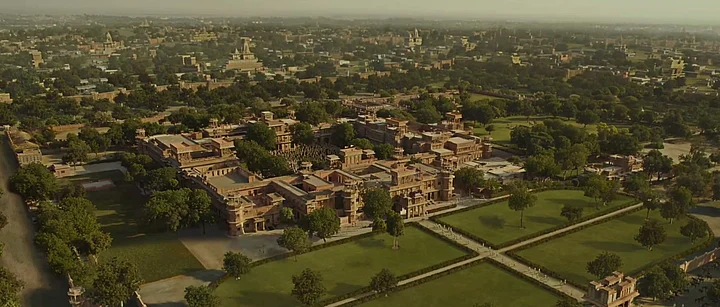Sarhad, gustaakhi maaf, shukriya, ishq – these are just some of the words that 12th century ruler Prithviraj (played by Akshay Kumar) and his cohort use at the drop of a hat in Yash Raj Film's Samrat Prithviraj, which released on 3 June.
Before one begins decoding and unravelling the many problems that plague the film, it's time to ask: Why is a 12th century ruler speaking in Farsi when the language hadn't even made it to the sub-continent by then?
The film is peppered with such historical inaccuracies – from misrepresentation in architecture and language to a faulty adaptation of a 16th century epic, from valourising the act of "Jauhar," and deliberate omissions to imposition of current-day Hindu-Muslim binaries on the rulers of the time.
But first, a quick primer on 12th century ruler, Prithviraj, and the two Battles of Tarain that he fought against Mohammad Ghori, the 12th century ruler of Ghazni.
Prithviraj was a Chahmana ruler with his capital in Ajmer. The Chahmanas were one of the many tribes that ruled the subcontinent in the 12th century, and one of the contemporary tribes was Gahadavalas of Kannauj, whose ruler Jaichand was the rival of Prithviraj. In Chand Bardai's epic – that makers of Prithviraj Samrat claim it's based on – Prithviraj abducts Jaichand's daughter Sanyogita.
Shihab-ud-din Ghori or Mohammad Ghori was the 12th century ruler of the kingdom of Ghazni who came to conquer the Punjab area in 1191, causing Prithviraj to push back, leading to the first battle of Tarain. The second battle was fought a year later in 1192, which Ghori won due to better strategy.
Samrat Prithviraj, the flim, can best be described as an ahistorical nightmare that is both dangerous and irresponsible. Here are some of the inaccuracies in the Akshay Kumar-Manushi Chillar film:
Faulty Adaptation, Deliberate Omissions
The film "claims" to be based on poet Chand Bardai's 16th century poem titled Prithviraj Raso. That this text is a reference point to narrate Prithviraj's life on screen is itself a problematic idea as the ruler belonged to the 12th century, while the text was written in the 16th century – almost 400 years later.
It is pertinent to remember that Prithviraj Raso itself is a fictional account of the Battle of Tarain.
Does the film at least stay true to the epic? No.
The film completely omits the fight between Prithviraj and his contemporary Jaichand of Kannauj. The fight was probably omitted because Prithviraj's army suffered severe losses in this battle. As per Bardai's epic, Prithviraj fled to Delhi.
In the epic, after the second Battle of Tarain, which Mohammad Ghori wins, Prithviraj is taken to the city of Ghazni and blinded. During an archery challenge, he aims an arrow at an unarmed Ghori, instantly killing him.
In the film, however, this version in the epic is further distorted, and Ghori is shown aiming a spear at Prithviraj, who hears about it, and kills Ghori with an arrow.
Apart from this, the film dedicates a chunk and a song to Jauhar – the historical act of self-immolation by women in order to protect the "community's honour." Apart from the fact that it valourises the dehumanising act, it's also odd that the writers of the film felt the need to even add this scene. After all, there is no mention of Jauhar in Bardai's Prithviraj Raso. If the film is based on Bardai's epic, then where did this addition of showing Jauhar come from at all?
False Historical Narrative
Not only is the film not true to the fictional account of Bardai, it's also not true to the proper historical narrative of the Battle of Tarain.
The film is obsessed with Delhi, which makes no sense because the Battle of Tarain never happened for Delhi. The first battle happened when Ghori came to modern day Bathinda (Punjab) and tried to capture it. This led Prithviraj's forces to push back. Ghori was defeated and used tactical retreat to get back to Ghazni, regroup his forces, and come back a year later to fight the second battle of Tarain.
Ghori won the second Battle of Tarain because of his excellent strategy of huddling Prithviraj's forces into one solid mass in the middle. They were then attacked by heavy cavalry. Prithviraj lost swiftly and is taken as a prisoner. He is, however, not taken to Ghazni. In fact, after some time he is released and sent back to Ajmer to rule as a tributary ruler for Ghori. The movie, however, has paid no importance to this.
In fact, in the film, the first battle of Tarain happens because Prithviraj wants to save "women's honour," which is absolutely false.
Imposition of Modern-Day Binaries on 12th Century Rulers
The entire point of the film is to show the Battle of Tarain as a battle between two religions. Prithviraj and his army are dressed in saffron, their flag is saffron. Ghori's army is dressed in green, and their flag is green.
This is ahistorical because there is no mention of the colour of Prithviraj and Ghori's armies' flags or uniforms in any of the literature written for Prithviraj or during his time.
Very early on in the film, Prithviraj proclaims that this battle is his "dharam" as a "Hindu." The term "Hindu" is not used to describe Prithviraj by Bardai or any other writer writing on the 12th century ruler. He is never called a Hindu.
This essentialisation of Ghori being a "Muslim" and Prithviraj being a "Hindu" is the epitome of historical inaccuracy in the movie. During Prithviraj's time, people were known by their ethnicity, so Prithviraj would simply have been called a "Chauhan" while Ghori would have been called a "Tajik."
This imposition of modern-day binaries is not only highly dangerous and irresponsible, it's also ahistorical.
12th Century Ruler, 15th Century Architecture?
In the film, Prithviraj is shown living in a marble palace, and I wonder why. The first marble construction was done for Hoshang Shah Ghori by his successor Mahmud Khalji of Mandu in 1440.
To reiterate this further, the first marble construction happened in the 15th century. Prithviraj was a 12th century ruler, and as per this poorly-researched film, he lived in a marble palace – 300 years before marble is even used. There are gladiatorial arenas in Ghazni in the film. Gladitorial arenas belong to Rome! And this is not Rome.
The makers of the film also seem obsessed with 16th-17th century Sultanate and Mughal-era architecture. For instance, the jaali work in Jaichand's palace (again, 12th century) in the movie is similar to the Sidi Saiyyid mosque in Gujarat's Ahmedabad, which was built in the 16th century.
The presence of jaali work in the film, which is set in 12th century, is ahistorical because the skill required to do such intricate and ornate jaali work just did not exist in the 12th century.
The film shows its many inhabitants living in these absolutely gorgeous palaces but historically, I assure you that they have never been found either above or below the ground from that era. This is because in the 11th-12th century, it was either dry masonary used as a construction technique or wood work.
Farce of Farsi
Two hours into the movie, and I am still wondering how Prithviraj is an expert Farsi speaker. Every 15 minutes, either Prithviraj or one of his people says gustakhi maaf. Other words in the film include sarhad, be-adbi, ishq, and shukriya – words that clearly don't belong to the sub-continent in the 12th century.
Did you know that at the time Farsi was not even the language of Ghori and his entourage? The language for the first 50 years of the Delhi Sultanate was "Turki," and Farsi became the court language later on.
(Ruchika Sharma teaches history for a living and is a doctoral scholar of History at the Centre for Historical Studies, Jawaharlal Nehru University, Delhi. She runs a YouTube channel, Eyeshadow & Etihaas.)


